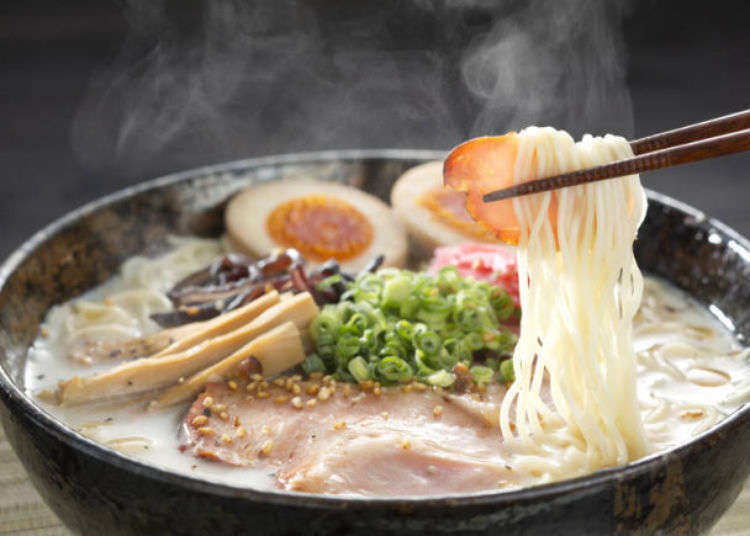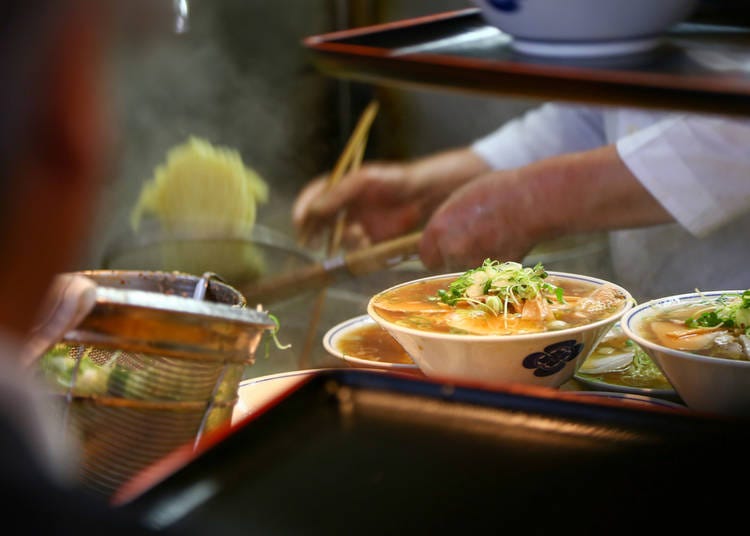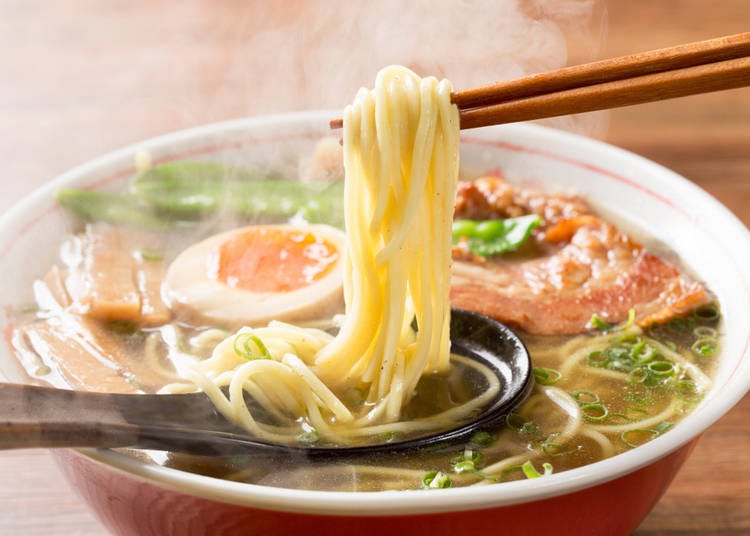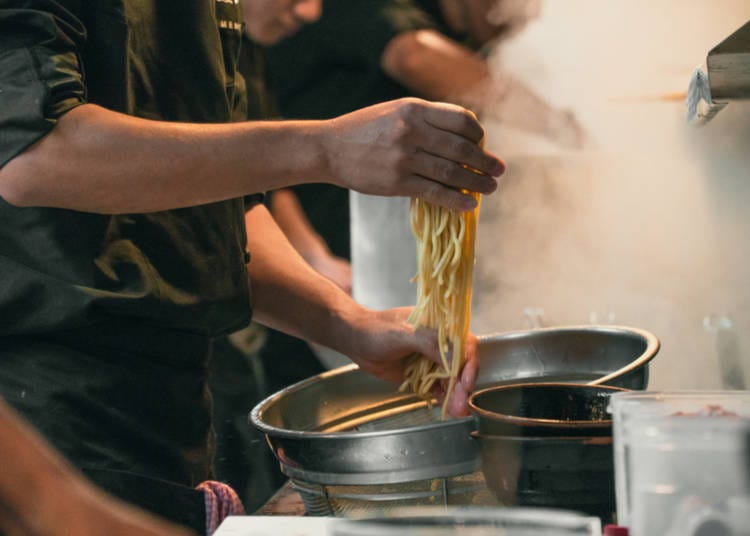
'The Noodles Were No Good!' What Shocked 5 Japanese People About Ramen Abroad
- Written by: Matt Vachon
With over 50,000 ramen shops located throughout Japan, it should come as no surprise that this rich, hearty soup is one of the country’s most popular foods. To the casual observer, this may seem like a common, straightforward meal, but ramen styles and flavors vary widely between Japan’s regions, with each area adding their own local twist to this traditional food. As a dish close to the hearts of many Japanese people, we asked five Japanese natives about their experience with ramen while living abroad.
How Common was it to Find Ramen Where You Lived?

In Japan, it seems you can’t go more than a block or two without walking past a ramen shop. We were curious to hear how this stacked up to our interviewees’ experiences living abroad.
(Iku, age 35; lived in: United States)
That depends on your definition of ramen. I could find instant ramen in pretty much every grocery store around me, but as for actual ramen shops, there were none.
(Yukari, age 32; lived in: Canada)
In my opinion, it was pretty common. The city that I lived in was very international and was home to many immigrants. Finding food from different countries was not all that challenging.
Like most foreign foods, whether or not you’ll find it in a certain area depends entirely on whether or not there is an audience for it. While it will never be as commonplace as it is in Japan, more cosmopolitan cities abroad will likely have a ramen shop or two. If you live in a more remote area however, you may be out of luck.
While Abroad, Did you Find any Ramen Shops That You Would Consider “Authentic”?

As most readers are probably aware, their favorite foreign restaurant, while delicious, is probably not entirely authentic to the country it originated from. Often times, these restaurants will tweak their recipes to appeal to the local palate (I’m looking at you, General Tso’s chicken). Does ramen in other countries manage to stay true to its roots, or does it also suffer from a culinary identity crisis?
(Ayumi, age 39; lived in: United Kingdom)
I did find some! There were a few shops that had what I would consider authentic Japanese-style ramen. They were part of common Japanese ramen chain restaurants though, so while authentic, there was nothing really stand-out about it.
This seemed to be a common theme among the people we interviewed. While not impossible to find a decent bowl of ramen, it was typically a rather paint-by-numbers experience; serving textbook ramen no real distinguishing characteristics. For the ramen novice, this probably isn’t an issue, but for Japanese people living abroad, it usually leaves something to be desired.
How Would You Compare the Taste and Quality of Ramen Where You Lived to Actual Japanese Ramen?

If you spend enough time abroad, you will eventually come to miss some of the comforts of home, especially the foods you grew up with. As any expatriate will tell you, there are few things more disappointing than finding one of these nostalgia-inducing dishes, taking a bite, and realizing it tastes nothing like mom used to make. That being the case, we asked our interviewees how the taste and quality of ramen in other countries stacked up to what they were familiar with back home.
(Iku, age 35; lived in: United States)
The noodles in the soup were usually overboiled.
(Ayumi, age 39; lived in: United Kingdom)
I thought the taste was fine, but there was usually less soup and noodles than you would get in a bowl of ramen in Japan.
(Rina, age 29; lived in: Canada and United States)
The taste and quality of the ramen shops I visited in Toronto was actually quite good! Overall it was very enjoyable. Occasionally though, the texture of the noodles wouldn’t be quite right. Noodle texture is very important in a good bowl of ramen; not too soft and just the right amount of chewiness.
There are many factors that go into a proper bowl of ramen. Beyond ingredients and taste, the preparation method goes a long way in determining the overall quality. As one of the interviewees noted above, texture plays a major role in Japanese cuisine. There is a fine line between overly firm and mushy noodles, but finding that sweet spot is essential to the integrity of the dish. Based on our interviewees’ experience, finding good tasting ramen abroad might not be challenging, but when it comes to the meal as a whole, consistency tends to be hit or miss.
How did the Price of Ramen Compare to Prices in Japan?

In Japan, a heaping bowl of ramen served with thick slices of pork will typically cost between ¥500 - ¥1000 ($4.50 - $9.00), making it the perfect meal after a long day at work or a night out at the bar. With its combination of rich flavors, hearty portions and inexpensive prices, it’s an easy go-to dish at any time. Is it possible to get a feast like this on a budget while living abroad?
(Yukari, age 32; lived in: Canada)
As they say, you get what you pay for. There were places where I found cheap ramen, but it was not very good. If I wanted quality ramen, it was much, much more expensive.
(Ayumi, age 39; lived in: United Kingdom)
It was so expensive! Compared to Japan, I would pay up to three times more for a bowl of ramen. In many countries, you need to leave a tip for the waitstaff as well, adding even more to the total cost.
Every person we interviewed had the same thing to say; if you’re looking for a decent bowl of ramen abroad, it won’t come cheap. At double or triple the price in other countries, this quintessential late-night feast becomes more of a special occasion treat.
When many foreigners think of ramen, they only know it as instant noodles. What would you recommend to someone looking to order their first real ramen in Japan?

For most people outside of Japan, ramen is synonymous with dehydrated noodle bricks with a side of salty flavor dust sold in packs of three for a dollar at the grocery store. To get you started on the life-changing path to real ramen goodness, we asked our interviewees for their top recommendations.
(Ayumi, age 39; lived in: United Kingdom)
Shoyu (soy sauce-based broth) ramen topped with thick slices of pork, called chashu, is the standard ramen, and a great place to start for your first time.
(Iku, age 35; lived in: United States)
Miso ramen is relatively new, but it’s very popular with younger people in Japan. The flavor is richer and less salty than shoyu ramen, so it may be better for a first time ramen eater.
(Rina, age 29; lived in: Canada and United States)
If you’re not sure where to go, look for the ramen shop with a line out the door. When in doubt, eat where the locals eat. The shop must be popular for a reason.
If you are planning to experience your first real bowl of ramen in Japan soon, rest assured that it’s hard to go wrong. As mentioned above, keep an eye out for a crowd and you’re bound to find something delicious. If you’re unsure of what to order, feel free to ask a staff member, “Osusume wa nan desu ka”, which means, “What do you recommend”.
While ramen may never reach the level of critical acclaim it has found in Japan on a global scale, it would appear that it is slowly becoming more commonplace around the world. As more ramen shops continue to pop up abroad, this Japanese soul food may one day shake its international reputation of being nothing more than emergency rations for broke college kids.
Matt Vachon is a content creator in Tokyo who enjoys exploring off the beaten path locations around Japan. Graduated from the University of Massachusetts before moving to Japan. Since that time, he has created content for numerous tourism focused publications including The Japan National Tourism Organization, Tsunagu Japan, and Tokyo Localized. Holds a bachelor's degree in psychology. He is passionate about filmmaking and has been working on documentaries about Japan. During his downtime, he's often indulging his inner foodie by trying out some of the best hidden gem restaurants in Tokyo.
- Area
*Prices and options mentioned are subject to change.
*Unless stated otherwise, all prices include tax.
Popular Tours & Activitiess
Recommended places for you
-

Black Friday 2025: These Are THE Japan Travel & Shopping Deals to Check Out
-

Don't Miss Out! The One Thing You Must Do Before Shopping at Mitsui Shopping Park LaLaport: Get Your Max 10% OFF Coupon Book
-

New Seibu L00 Series Launching in 2026! What to See Along the Tokyo-Area Golden Route
by: Guest Contributor
-

Enjoy Japan's Gorgeous Winter Lights! Ride the Romancecar to Shonan no Hoseki Illumination
by: Guest Contributor
-

2025 Japan Autumn Color Report: Tokyo's Ginkgo Trees Starting to Glow
by: Timothy Sullivan
-

LaLaport TOKYO-BAY North Building Now Open: Shop, Dine & Enjoy Events at LaLa arena, Just 2 Stops from Disney
by: Wemmy Chau
Inspiration for Accommodations
-

Enjoy Mt. Fuji from the Comfort of Your Room! Recommended Ryokan with Mt. Fuji View
-

Stay Near the Cherry Blossoms! Hotels for Cherry Blossom Viewing in Tokyo
-

Family-Friendly Hotels with Free Shuttle to Disneyland: Convenient Access for a Magical Stay
-

Top Ranked Hakone Hotels with Mt. Fuji View: Enjoy Stunning Scenery from Your Private Space
-

Convenient Tokyo Hotels with Airport Shuttle: Ideal for Families and Heavy Luggage
-

Stunning Tokyo Tower View Hotels: Enjoy Spectacular Scenery from Your Private Space
-

Convenient Asakusa Hotels with Kitchens: Ideal for Extended Family Visits
-

Experience Luxury: Hakone's 10 Best Five-Star Accommodations
-

Enjoy Mt. Fuji Autumn Leaves! Top Hotels Near the Popular Autumn Leaves Corridor
-

Experience Hakone Fall Foliage from Your Room with Stunning Views
-

Tokyo Station: Then and Now
-

Tokyo Station Top 10 Sweets Ranking!
-

Easy Day Trip from Tokyo! Ultimate Sightseeing Guide for Hakone & Lake Ashinoko!
-

Tokyo's Top Electronics Stores: Find Your Perfect Shop by Purpose & Style (Major Retailers, Gaming, Cameras & More)
by: Ran Tanaka
-
Ad

Japan Has New, Easy Mobile Charging Stations?! We Give New ChargeSPOT a Go!
-

Winter Must-Haves in Japan: Stay Warm and Hydrated With Finds From Don Quijote, BicCamera & SUNDRUG
by: Wemmy Chau
- #best ramen tokyo
- #what to buy in ameyoko
- #what to bring to japan
- #new years in tokyo
- #best izakaya shinjuku
- #things to do tokyo
- #japanese nail trends
- #what to do in odaiba
- #onsen tattoo friendly tokyo
- #daiso
- #best sushi ginza
- #japanese convenience store snacks
- #best yakiniku shibuya
- #japanese fashion culture
- #best japanese soft drinks




















